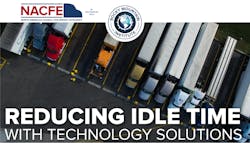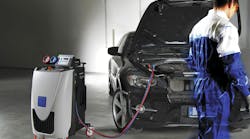The North American Council for Freight Efficiency (NACFE) released its latest Confidence Report on idle-reduction technologies. NACFE published its first report on idle-reduction technologies in June 2014 when fuel prices were north of $4 a gallon. While fuel prices are still a huge part of a fleet’s operating expense, today’s lower fuel prices extend payback time for idle reduction technologies. However, there are other reasons fleets should invest in idle-reduction technologies, not the least of which is driver attraction and retention. Drivers expect to be comfortable in their vehicles during their mandated rest periods and they want to be able to use computers, gaming systems, microwaves, refrigerators, and charge their mobile phones without having the engine running.
“Idle reduction is an investment not in fuel reduction but in driver retention and driver satisfaction,” says Darry Stuart, president and CEO, DWS Fleet Management.
Achieving emissions and sustainability goals are other reasons fleets are looking for ways to reduce idle.
“By investing in technologies and practices, fleets can reduce idle to well below 20 percent. The challenge is figuring out which set of technologies are best for you and being diligent in making it work,” says Mike Roeth, executive director, NACFE.
While there is no one right answer when it comes to reducing idling, the report explores a variety of options including fuel-operated heaters, diesel APUs, battery HVAC systems, automatic engine start/stop systems and vehicle controls, and driver behavior as main solutions to idling. It also covers solutions like additional cab insulation and light-colored paint that can enhance a fleet’s idle-reduction efforts.
The report found that the most efficient and effective idle-reduction solution for a fleet entails a combination of complementary technologies used together. Four anchor technologies — driver controls along with fuel-operated heaters, diesel APUs along with fuel-operated heaters, battery HVACs along with fuel-operated heaters, and automatic engine start/stop systems — are best as the basis for a solution with additional technologies to support the anchor.
The report concluded that a reduction of 20 percent is not unreasonable if the right combination of technologies is employed and managed. Drivers are a very important part of successful management of idle times.
Since every fleet has its own goals, the benefits and challenges of each technology need to be weighed along with the fleet objective to find the technologies that will work best for that fleet.
The report also includes a Confidence Matrix and a payback calculator. The report is available at nacfe.org.


